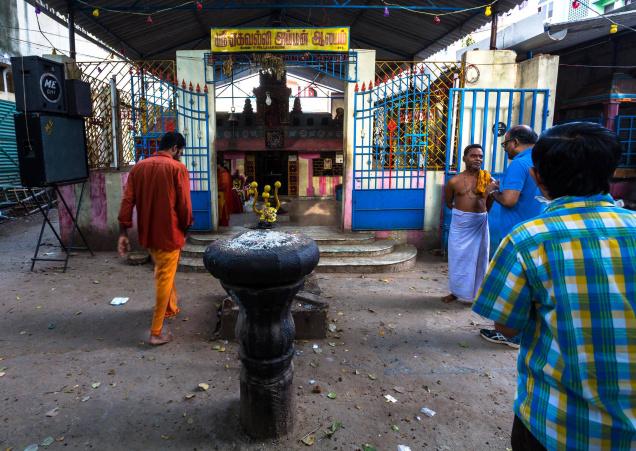
Early one morning this month, I set out for Prakasam Salai (aka Broadway) with a few friends, our destination being the Pidari Amman Koil.
It all began with a search on Google, regarding the North Gate of Fort St. George. I came across a House of Lords paper dating to 1839. Right-wing Protestants of Madras had complained about the practice of the East India Company supporting Hindu and Muslim festivals in the city and its environs. The paper listed several ‘heathen’ events, in which the Company played a part. Among them was the annual procession of the Idol Padarier, the Goddess of Madras. The festival, an ancient one, had not been held for 30 years when Mr E, the Collector of Madras, decided to revive it in 1818. The person referred to is obviously the orientalist FW Ellis, who helped establish the College of Fort St George, gave us the Dravidian proof for the southern languages, and translated the Kural.
Ellis, however, died before his plans became a reality. The Company took it upon itself to revive the custom in 1821, and annually sanctioned Rs. 350 for its conduct. The Goddess was brought out of her shrine in procession and came to the North Gate of Fort St George. There, the collector waited upon her and presented her with a ‘gold botto called talee, a piece of red silk cloth called Cooray with Doopa Deepum (incense)’. Town was then a walled city, and when it was found difficult to carry the idol through the Pully Gate at the end of Thambu Chetty Street, the height of the arch was increased at Company expense.
The Eicher map of Madras revealed a Pidariar Koil Street in Town off Broadway. A call to good friend Prasanna Ramaswami confirmed that Pidari is the Tamil derivative of the Sanskrit term Pida Hari — destroyer of suffering and that it was a Goddess.
And so there we were, looking for the Pidariar temple. We got caught up in a poultry market that comes up each Sunday in the environs, but managed to reach Pidariar Koil Street; from there, we turned into Amman Koil Lane. There was a shrine for Goddess Ekavalli, whose figurine and bali peetham pointed to a venerable past. Without revealing what we knew, we asked the priest about the temple’s history. He did not know much, but he did remember his father telling him that sometime in the distant past the Goddess set out each year on a tour of her city’s bounds and that the collector waited on her at the Fort. That confirmed that this was indeed the Goddess Pidariar. As to how she became Ekavalli is an unsolved mystery. When did she stop going out? That too is not known.
The temple happily shares a wall with a mosque. In Chennai, secularism is a way of life.
source: http://www.thehindu.com / The Hindu / Home> Features> MetroPlus – Hidden Histories / by Dr.Vijay Sriram (Sriram V)/ Chennai – February 26th, 2016